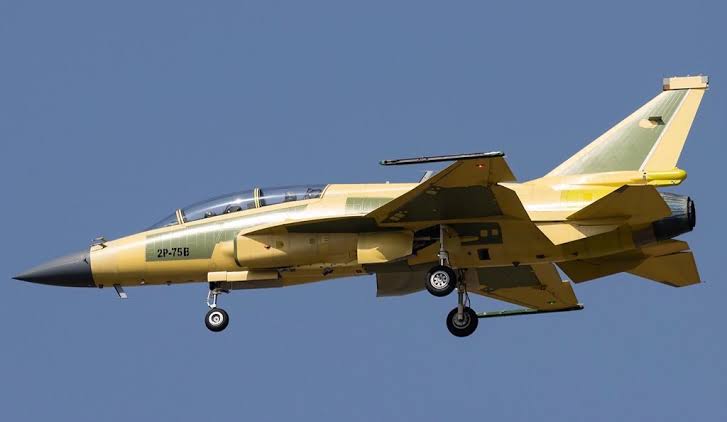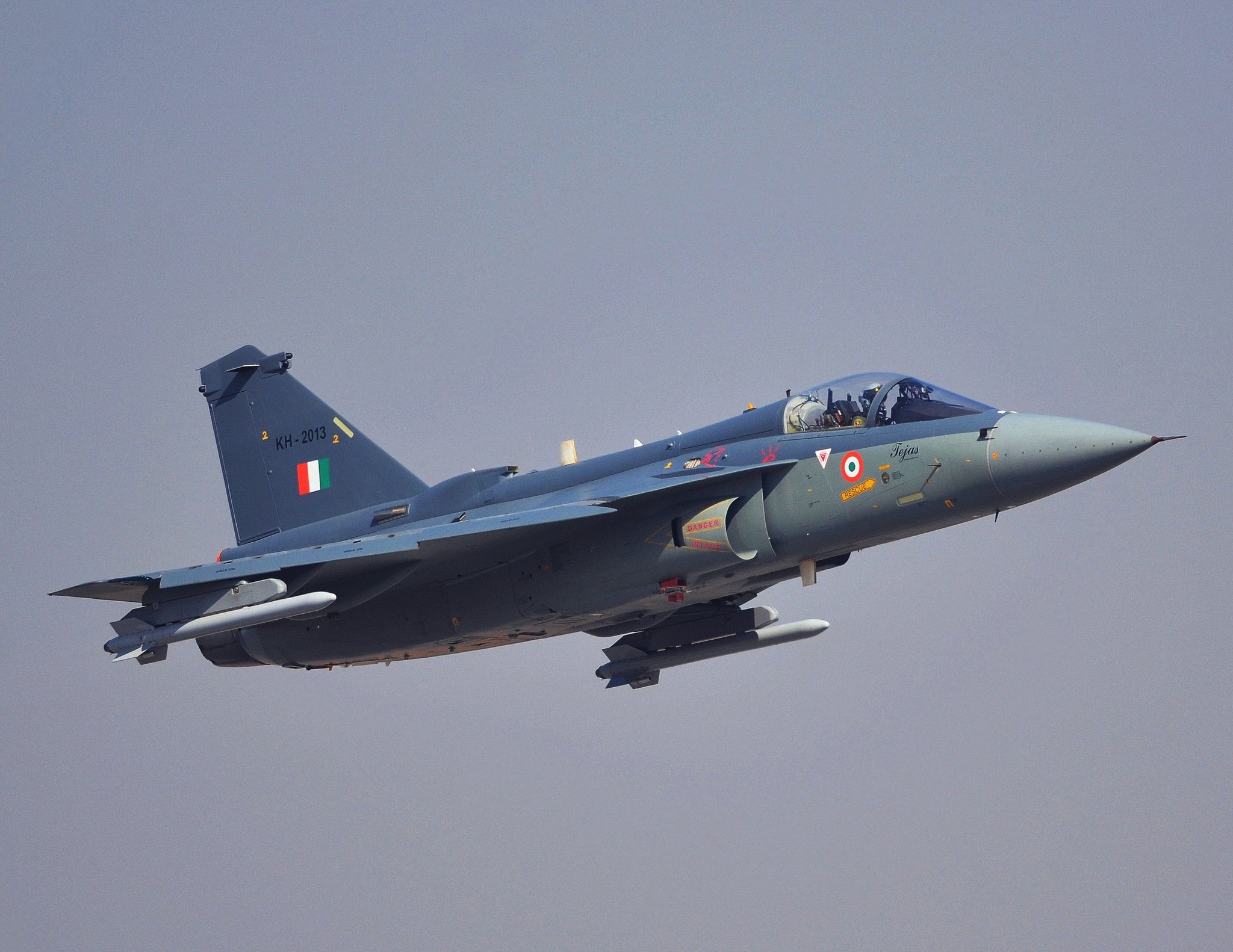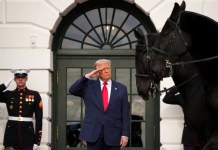Argentina is reportedly looking to procure a dozen of JF-17 Block III fighter aircraft from China / Pakistan. For this, the Argentine government has proposed $664 million in its 2021-22 budget.
Developed By Israel, Designed For Asia – Meet ‘Re-Engineered’ Kfir Fighter Jet That Resembles The Mirage 2000
Rolls Royce Flies World’s ‘Fastest Electric Aircraft’; Marks Big Milestone In Aviation Industry — Watch
The Fuerza Aérea Argentina (FAA) or Argentina’s air force, has been looking for a fighter jet ever since the retirement of the Dassault Mirage III interceptor aircraft in 2015, which was the FAA’s backbone.
However, the UK has been blocking Buenos Aires’ attempts to procure fighter jets from other sources.
Recent attempts to procure the JAS 39 Gripen from Sweden and the KAI FA-50 Fighting Eagle from South Korea were derailed by the UK owing to an embargo, which traces its roots in the 1982 Falklands War — a 10-week-long armed conflict between the UK and Argentine troops over two British dependent territories in the South Atlantic.
After repeated snubs from the British, western governments, Argentina has turned to China. However, there is a complication in the potential procurement of the JF-17 Thunder from China & Pakistan – the aircraft’s ejection seat is built by the UK and the British government may impose an embargo on the sales.
The JF-17 Thunder
Argentina’s air force requires an urgent overhaul, but whether the South American country can afford the JF-17 is still a question. The addition of having JF-17 Block III, which comes with better heads-up display (HUD) and AESA radars, may give the FAA a shot in the arm, sources from Pakistan told this writer.
Video Resurfaces When World’s Most Powerful Aircraft – F-22 Raptor Was ‘Shot-Down’ By Rafale Fighter Jet
They speculate that China would handle the procurement deal as Pakistan would not like to antagonize the UK. This leads to the possibility that Beijing might give Buenos Aires a loan as the country has a stake in the project.

The JF-17 is a medium-sized multi-role fighter aircraft jointly developed by China’s Chengdu Aircraft Corporation (CAC) and Pakistan Aeronautical Complex (PAC) to meet the airpower requirements of the Pakistan Airforce.
The fighter jet comes with both single and twin-seat variants and sports an overall length of 14.9 meters. The aircraft is 4.77m tall and 9.45m wide and has a wing area of 24.4m². The JF-17 has an empty weight of 6,441 kg, a maximum take-off weight (MTOW) of 12,700kg, a loaded weight of 9,100kg, and a maximum landing weight of 7,802kg. The aircraft’s fuel weight is 2,268kg.
Meet One Of World’s ‘Weakest Air Forces’ That Boasts Rafale, Typhoon, F-15EX & Now Eying F-35 Stealth Fighters
The Thunder is powered by a Klimov RD-93 turbofan engine or WS-13 turbofan engine with a dry thrust capacity of 49.4 Kilonewton while its thrust afterburner is 84.4kN. The fighter jet can cruise at a maximum speed of 2,205 kilometers per hour and has a ferry range of 3,480km, an operational radius of 1,352km, and boasts a service ceiling of 16,920m.
The jet is armed with 1 x 2 mm GSh-23-2 twin-barrel cannon guns, 57mm, 90mm unguided rocket pods, short-range, AIM-9L/M, PL-5E, PL-9C, and beyond visual range (BVR) PL-12/SD-10 air-to-air missiles. The aircraft also comes armed with a slew of anti-surface missiles like the MAR-1 anti-radiation missile, AM-39 Exocet anti-ship missile, and Ra’ad ALCM cruise missile.
India’s Pride, Neighbour’s Envy – Why Rafale Jets Find Few Global Buyers Compared To Eurofighter Typhoons?
The Thunder took its maiden flight in 2003 and formally entered into service in 2007. The first operational fighter fleet was the Black Spider squadron which saw the induction of 14 JF-17s in 2010. The prototype for the Block III variant completed its maiden flight last year.
According to Islamabad-based think tank Pakistan Strategic Forum (PSF), “The Government of the Argentine Republic has officially included funding for the purchase of 12 PAC JF-17 A Block III fighters in a draft budget for 2022 presented to Argentina’s Parliament. The funding requests $664 million for the purchase of 12 JF-17s from Pakistan. The Argentine Air Force has chosen Pakistan’s JF-17 Thunder, discarding offers from Russia, the USA, and India“.
The 12 JF-17s will include 10 single-seater Block IIIs and 2 dual-seat Block IIIs, PSF says.
“The PAC JF-17 A Block III is a supersonic, multirole 4+ generation fighter aircraft capable of performing combat air patrol, air interdiction, BVR integrated battle, long-range maritime strikes, standoff range precision ground strikes, anti-radiation Suppression of Enemy Air Defenses (SEAD) Defeating Threat Air Defenses (DEAD) missions and electronic warfare (EW)”, according to the think tank.

The primary air-to-air weapon on the fighter is the PL-15 with a range of over 180 kilometers and a NEZ approaching 100 kilometers. The fighter features superior sensor fusion and avionics (especially electronic warfare systems), as well as a large heads-up display (HUD) and helmet-mounted display (HMD) targeting systems for the PL-10 High Off-Boresight (HOBS) IR missiles, which are the secondary air-to-air weapon.
The fighter can reach Mach 1.8, has a service ceiling of over 55,000 feet and a newer, more powerful engine than its predecessor variants, and has 8 hardpoints for an assortment of weaponry.
What’s The Problem With India’s Tejas?
A Chinese delegation met with Argentine officials on May 12 this year about the potential procurement of a dozen FC-1 fighter jets (Chinese designation for the PAF JF-17).
There was speculation that India’s Tejas Light Combat Aircraft developed by Hindustan Aeronautics Limited (HAL) might also be under consideration. However, the use of British parts in aircraft seems to have eliminated it from the procurement race too.
10 Reasons Why India’s LCA Tejas Could Be ‘Shot-Down’ By Pakistan’s JF-17 Thunder In Global Arms Market?
It is believed three core components of British origin were found in the Tejas fighter jet. The Quartz Nose cone (Radome) coupled with the air-to-air refueling probe for the LCA’s FOC variant is manufactured by Cobham, a British aerospace manufacturer.
The LCA Tejas fleet also comes with a Mark 16 IN16G zero/zero ejection seat made by Martin-Baker, another British firm.

This has been a recurring theme in the FAA’s fighter procurement from the export market. The procurement of the South Korean F-60 did not pan out owing to six major components being of British origin.
Earlier, Argentina had attempted to procure five French Dassault Super Etendard Modernise jets. However, the arms embargo over the Martin Baker-manufactured MK6 ejection seat resulted in the cancellation of a potential deal.
Even the JF-17 comes with the Martin-Baker manufactured PK16LE ejection seat. However, Beijing is reportedly trying to circumvent this by offering the HTY5/HTY7A ejection seats manufactured by Chinese Aerospace Life Support Industries (ALI). This ejection seat is also used in the Chinese J-10 jets and some variants of the K-8 trainer series.
- Aritra Banerjee is a defense journalist who has worked in both online and print media. He has laid an emphasis on issues related to military human resources, tactical psychology, military-media relations, professional military education, and combat fitness. He can be reached on email: aritrareporter@gmail.com.
- Follow EurAsian Times on Google News




